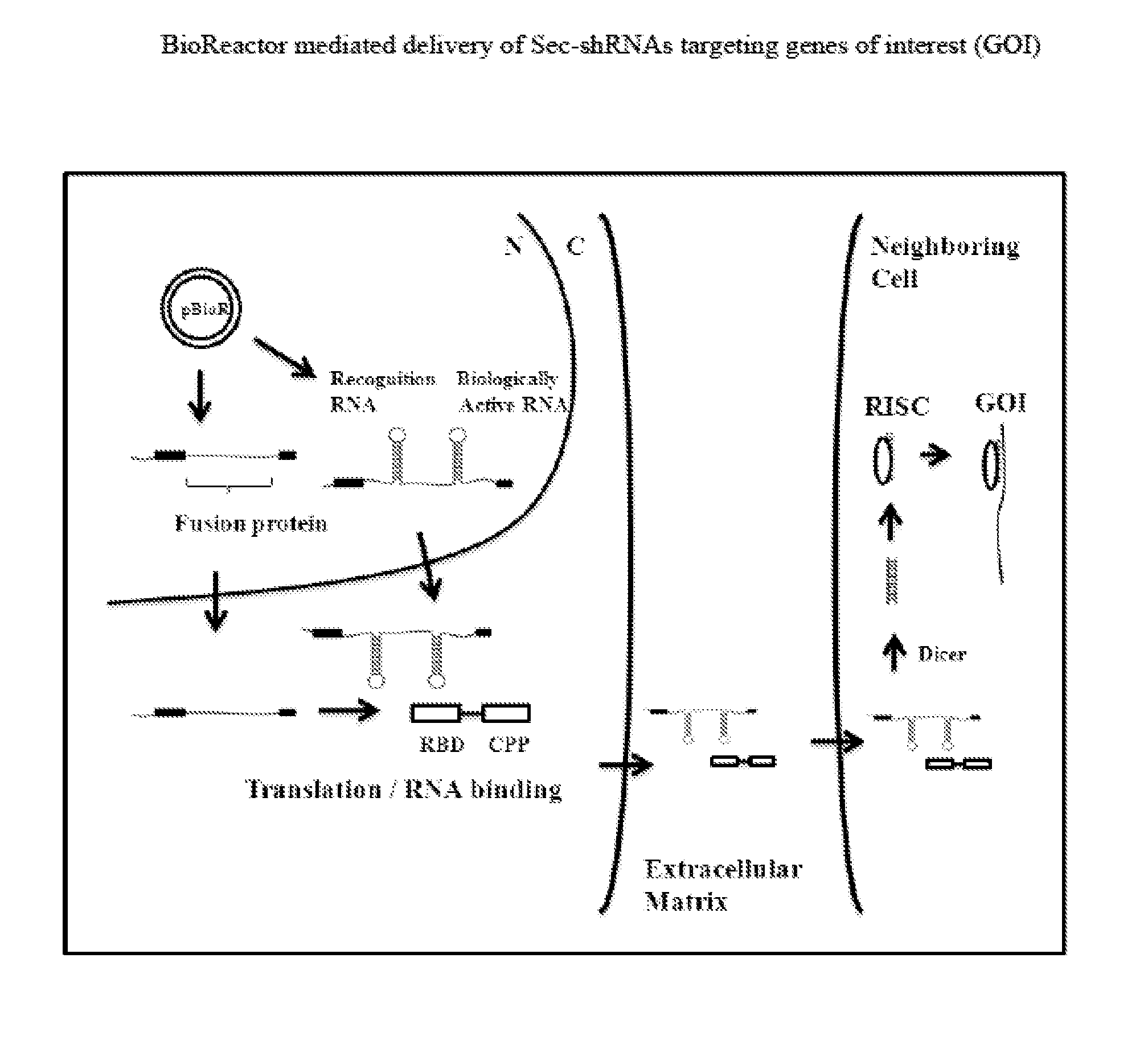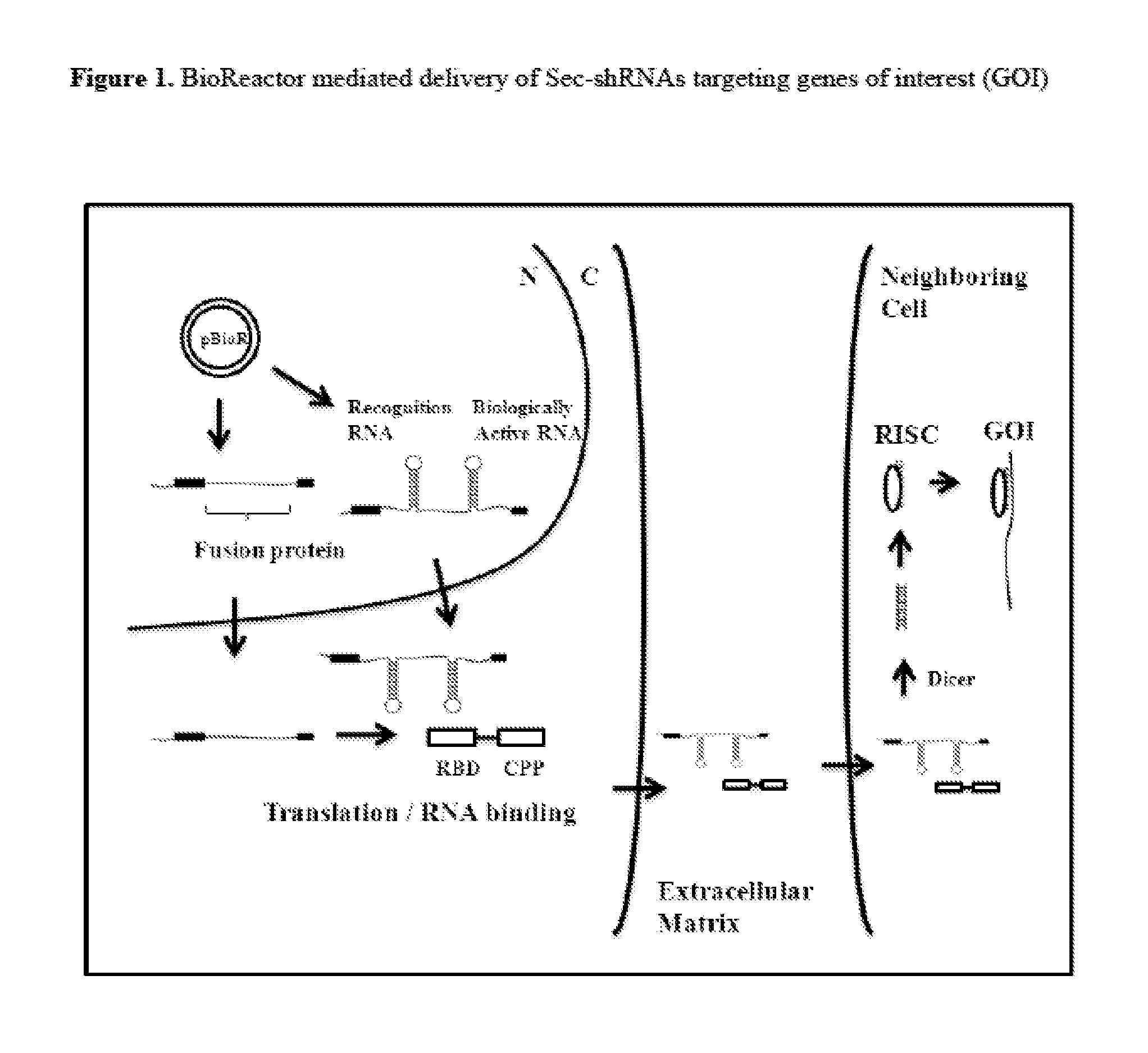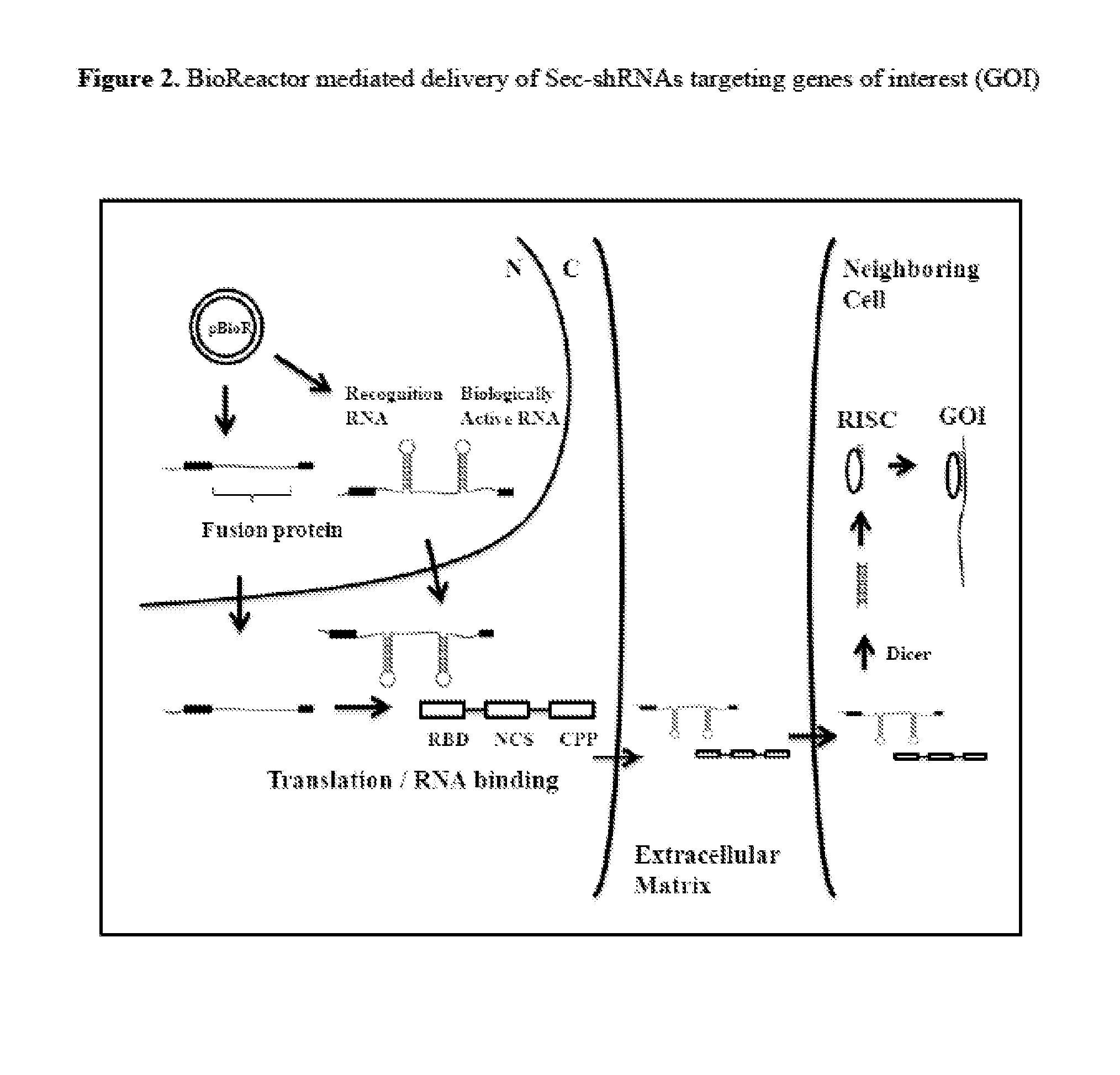Compositions and Methods for the Delivery of Biologically Active RNAs
a technology composition, which is applied in the direction of fusion with rna-binding domain, biochemistry apparatus and processes, viruses/bacteriophages, etc., can solve the problem of limiting the extent of gene regulation within a population of cells, affecting the application of the application, and achieving similar extents of transfection in vivo. , to achieve the effect of facilitating the import of biologically active rna, low endogenous activity level level
- Summary
- Abstract
- Description
- Claims
- Application Information
AI Technical Summary
Benefits of technology
Problems solved by technology
Method used
Image
Examples
example 1
General Construction of a Bioreactor Plasmid of the Invention
[0343]Expression vectors are constructed from isolated plasmid backbones and PCR amplified expression cassettes for both the RNA (sec-RNA) and protein (fusion protein) components. Examples of suitable backbone vectors include those derived from pCI, pET, pSI, pcDNA, pCMV, etc. The expression vector should include at least the following components: an origin of replication for preparation in bacteria, an antibiotic selectable marker, a promoter for RNA expression (Pol-II or Pol-III), a terminator sequence appropriate to the promoter sequence, a promoter for fusion protein expression and a poly-A tail sequence. One example of a suitable backbone vector is selected from the various pEGEN backbone vectors described herein, which are derived from pSI (Promega, product # E1721), pCI (Promega, product # E1731), pVAX (Invitrogen, product #12727-010) and other in house constructs. The pEGEN vectors, e.g. pEGEN 1.1, pEGEN 2.1, pEGEN...
example 2
Construction of a Bioreactor Plasmid pBioR(1) with a Sec-shRNA Delivered by a CPP-RBD Fusion Protein
[0351]An expression vector capable of expressing a bioreactor fusion protein and a secreted shRNA (Sec-shRNA) is described here. Production and delivery of Sec-shRNAs targeting any of the gene targets listed in Table I and Table VII, as well as any other target mRNAs, is accomplished with the plasmid pBioR(1), which is constructed from two parent plasmids. The first parent plasmid, pEGENFP, expresses the fusion protein and is constructed by cloning a fusion protein cassette comprising an RNA binding domain sequence from Table III and a cell penetrating peptide sequence from Table IV into the multiple cloning site of a pEGEN vector from Table VIII using the plasmids and methods described in Example 1. In one embodiment, this process places the fusion protein cassette downstream of a strong Pol II promoter sequence (chicken β-actin promoter) and upstream of an hGH polyA signal sequence....
example 3
Construction of the Bioreactor Plasmid pBioR(2) with a Sec-shRNA Delivered by a CPP-NCS-RBD Fusion Protein
[0355]Delivery of Sec-shRNAs targeting any of the gene targets from Table I and Table VII, as well as any other gene targets, is also accomplished with the plasmid pBioR(2), which is constructed using the same methods described in Examples 1 and 2. pBioR 2 encodes a fusion protein comprising a viral, prokaryotic or eukaryotic non-classical secretory domain from Table V fused to an RNA binding domain from Table III and a cell penetrating peptide from Table IV. This fusion protein is assembled with or without alpha helical linker or other linker domains. The expression cassettes for the fusion protein and the Sec-shRNA are ligated into the pEGEN plasmids from Table VIII using the methods described in Examples 1 and 2.
PUM
| Property | Measurement | Unit |
|---|---|---|
| Gene expression profile | aaaaa | aaaaa |
| Transport properties | aaaaa | aaaaa |
Abstract
Description
Claims
Application Information
 Login to View More
Login to View More - R&D
- Intellectual Property
- Life Sciences
- Materials
- Tech Scout
- Unparalleled Data Quality
- Higher Quality Content
- 60% Fewer Hallucinations
Browse by: Latest US Patents, China's latest patents, Technical Efficacy Thesaurus, Application Domain, Technology Topic, Popular Technical Reports.
© 2025 PatSnap. All rights reserved.Legal|Privacy policy|Modern Slavery Act Transparency Statement|Sitemap|About US| Contact US: help@patsnap.com



